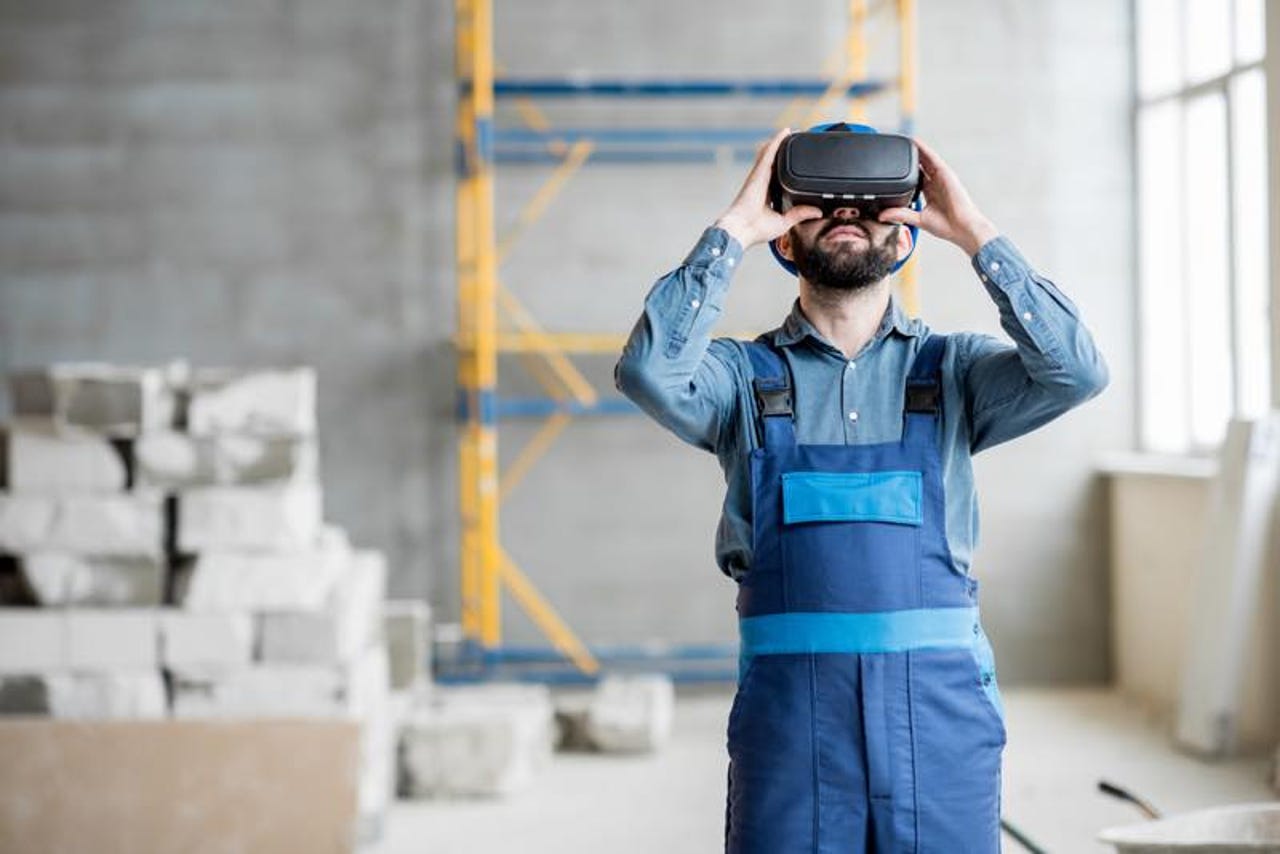Selling an emotion and a feeling: How these companies see VR as the future of business


Any other engineering or architecture firm might take a client out to a proposed site and try to explain the planned development using a posterboard of photos or a mockup drawing, but Halff Associates, Inc. does things a little differently: the company hands over an Oculus Quest to clients and lets them see the plans laid out in a virtual world, so they can see how tall it will be above them, how much space it takes up on the plot of land, and if the design can genuinely work.
"One thing we do a lot of in our profession is we sell concepts and ideas -- we're sort of selling an emotion and a feeling," says David Buchanan, the director of landscape architecture at Halff Associates.
"And what virtual reality has allowed us to do was to allow people to still see what we could represent on a board, but feel the wind in their hair, feel the sun shining on their face, and provided that extra layer of detail that really sets the stage for that concept."
Halff Associates has been utilizing virtual and augmented reality (AR) technologies since 2018. The first project Halff Associates successfully used VR and AR for was for a city in Texas looking to build an amphitheater and park in the town square.
In the company's use case, Buchanan said they took out the clients, who consisted of engineers, members of the Parks and Recreation department, and the mayor, to the vacant site to fully immerse themselves in how the project would look once completed.
"They were able to lift [the headset] up to see what it is today and then put the headset on to see what it will be, and it made a pretty dramatic impact," Buchanan said. "It didn't take much on our end to convince everyone to go with the more complex and costly option."
Buchanan said they also use have been utilizing AR/VR technology in the beginning stages of a project to show clients the site of a location, without actually physically going to the location.
"When we go out and analyze a site, sometimes it's very hard to see existing conditions because it is so thick, or we may have an older client that cannot traverse through a heavily wooded area," he said. "So our drone pilot has their handheld device on an iPad, and we give our client the VR headset, and they can actually see what the drone is seeing at the time."
For Halff Associates and an increasing number of businesses, utilizing VR and AR technologies has proven to benefit both the company and the customers. Different industry sectors are figuring out how to best use this ever-growing and ever-changing technology to their advantage, from healthcare to retail to real estate to manufacturing.
The global VR and AR market is expected to reach $97.76 billion by 2028—a considerable jump from its 2020 value of $4.16 billion.
VR and AR offer interactive experiences in real-world environments through various sensory modalities like visual, auditory, haptic, and somatosensory. And, with the metaverse now more popular than ever, companies like Halff Associates see the technology as the future.
"We're exploring more of the integrated experience [of VR]," Buchanan said. "Right now, we use it where you stand in one spot, circle around 360 degrees, and see what's in front of you. But we are beginning to explore that integration component where you can not only turn 360 degrees, but you have a controller in hand, and we're using an Oculus to explore how we can control our way through the site."
Vertiv, a company specializing in designing, building, and servicing critical infrastructure for data centers, also has experience using this technology. Cristian Scarpa, the regional CIO for the EMEA at Vertiv, said they created an extended reality (XR) experience to not only place a product into a space, but also as a unique walk-through experience for the customers.
"It is not a 3D web configurator or a virtual visit to a Vertiv location, but rather we have created a tailor-made digital journey for the customer, giving them the opportunity to lead a first-person exploration of the products in AR," Scarpa said.
"Customers are able to interact live in a virtual world – not a generic one, but a showroom of our products and capabilities – and learn how we run our operations by creating a digital twin of our businesses.
The company has an XR app called Vertiv XR. The app allows customers to explore Vertiv's products through augmented reality in order to understand the unique selling points of each product, and to create more of a consumer-like experience.
"The app enables [customers] to discover and explore our product in augmented reality and puts the product in front of them so they can navigate and explore all the functionalities and unique selling points," Scarpa said.
In this way, prospective buyers can see what Vertiv's machines look like or how they will fit into their location before even purchasing them—a win-win for both the customer and the business.
According to a 2021 study published in the Journal of Marketing, the likelihood of a customer purchasing something due to an interactive AR experience was 19.8% higher than customers who did not use AR, providing evidence that AR can help businesses increase revenues.
In addition, 56% of shoppers surveyed by NielsenIQ said that AR gives them more confidence about the quality of a product, and 61% said they prefer to shop with retailers that offer AR experiences over ones that don't.
Both Vertiv and Halff Associates say they plan to continue to utilize AR and VR technologies in their respective businesses as it becomes increasingly popular and valuable in our world.
"VR has been a success for us. We feel like it's a great technology that allows us to do more," Buchanan said. "We're going to continue to explore how we can integrate it and who knows what the future holds."